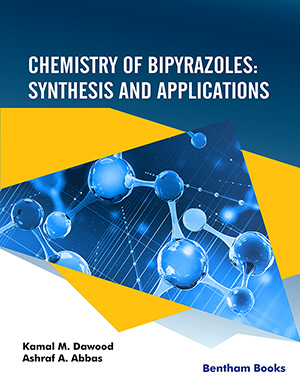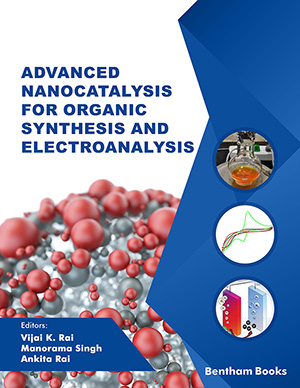
Abstract
Plasmalogens are unique vinyl ether glycerophospholipids that serve diverse structural roles in the membranes of cells and cell organelles. Additionally, the fatty acid substitutions at sn– 2 of the glycerol backbone are dynamically removed by lipases and replaced by acyltransferases. These fatty acid storage pools provide the free arachidonic acid and docosahexaenoic acid (DHA) involved in signal transduction cascades.
The biosynthesis of plasmalogens critically involves the generation of the ether lipid substitution at sn–1 of the glycerol backbone. This step only occurs in peroxisomes and is dysfunctional in genetic peroxisomal disorders and in several diseases of aging.
A number of approaches have been undertaken to augment plasmalogen levels in these clinical conditions. In this review we present the current status of alkylglycerol precursors that bypass the requirement of the peroxisomal compartment.
Keywords: Alkylglycerol, Ecomer, krill oil, DHA, plasmalogen, peroxisome.
Current Organic Chemistry
Title:Alkylglycerol Lipid Precursors: A Review of Therapeutic Strategies for Plasmalogen Replacement
Volume: 17 Issue: 8
Author(s): Paul L. Wood
Affiliation:
Keywords: Alkylglycerol, Ecomer, krill oil, DHA, plasmalogen, peroxisome.
Abstract: Plasmalogens are unique vinyl ether glycerophospholipids that serve diverse structural roles in the membranes of cells and cell organelles. Additionally, the fatty acid substitutions at sn– 2 of the glycerol backbone are dynamically removed by lipases and replaced by acyltransferases. These fatty acid storage pools provide the free arachidonic acid and docosahexaenoic acid (DHA) involved in signal transduction cascades.
The biosynthesis of plasmalogens critically involves the generation of the ether lipid substitution at sn–1 of the glycerol backbone. This step only occurs in peroxisomes and is dysfunctional in genetic peroxisomal disorders and in several diseases of aging.
A number of approaches have been undertaken to augment plasmalogen levels in these clinical conditions. In this review we present the current status of alkylglycerol precursors that bypass the requirement of the peroxisomal compartment.
Export Options
About this article
Cite this article as:
Wood Paul L., Alkylglycerol Lipid Precursors: A Review of Therapeutic Strategies for Plasmalogen Replacement, Current Organic Chemistry 2013; 17 (8) . https://dx.doi.org/10.2174/1385272811317080004
| DOI https://dx.doi.org/10.2174/1385272811317080004 |
Print ISSN 1385-2728 |
| Publisher Name Bentham Science Publisher |
Online ISSN 1875-5348 |
Call for Papers in Thematic Issues
Catalytic C-H bond activation as a tool for functionalization of heterocycles
The major topic is the functionalization of heterocycles through catalyzed C-H bond activation. The strategies based on C-H activation not only provide straightforward formation of C-C or C-X bonds but, more importantly, allow for the avoidance of pre-functionalization of one or two of the cross-coupling partners. The beneficial impact of ...read more
Electrochemical C-X bond formation
Conventional methods for carrying out carbon–X bond formation are typically conducted at harsh reaction conditions, and rely on expensive catalysts as well as the use of stoichiometric, and perhaps toxic, oxidants. In this regard, electrochemical synthesis has recently been recognized as a sustainable and scalable strategy for the construction of ...read more
From Lab Bench to Algorithm: The Future of Organic Chemistry Powered by AI
Organic chemistry, with its intricate dance of molecules and reactions, is undergoing a transformation fuelled by the power of Artificial Intelligence (AI) and Machine Learning (ML). The integration of AI/ML with Organic Chemistry is revolutionizing the field by enhancing the efficiency and accuracy of chemical research and development. These technologies ...read more
N-Heterocyclics: Synthesis, Computational Studies, and Coordination Chemistry - A synthetic perspective
N-heterocycles, such as phenanthroline, quinoline, or their organometallic complexes, are widely used in a variety of fields, including chemistry, biochemistry, and coordination chemistry. They play a key role in many chemical and biological processes as biological ligands, medicinal agents, catalysts in organic synthesis, molecular probes and sensors, as well as ...read more
Related Journals
 15
15
- Author Guidelines
- Graphical Abstracts
- Fabricating and Stating False Information
- Research Misconduct
- Post Publication Discussions and Corrections
- Publishing Ethics and Rectitude
- Increase Visibility of Your Article
- Archiving Policies
- Peer Review Workflow
- Order Your Article Before Print
- Promote Your Article
- Manuscript Transfer Facility
- Editorial Policies
- Allegations from Whistleblowers
- Announcements
Related Articles
-
Highly Pure Phospholipids Based Brain Docosahexaenoic Acid Transporters
Recent Patents on CNS Drug Discovery (Discontinued) Treating Hypertension in the Elderly: Common Problems and Solutions
Current Hypertension Reviews Hallucinations Associated with Topiramate Therapy: A Case Report and Review of the Literature
Current Drug Safety Characterization of Serum Exosomes from a Transgenic Mouse Model of Alzheimer’s Disease
Current Alzheimer Research State Dissociation, Human Behavior, and Consciousness
Current Topics in Medicinal Chemistry New Pharmacological Approaches in Infants with Hypoxic-Ischemic Encephalopathy
Current Pharmaceutical Design Kinetic Study on the Effects of Extremely Low Frequency Electromagnetic Field on Catalase, Cytochrome P450 and Inducible Nitric Oxide Synthase in Human HaCaT and THP-1 Cell Lines
CNS & Neurological Disorders - Drug Targets Advanced Drug Delivery of N-Acetylcarnosine (N-Acetyl-beta-alanyl-Lhistidine), Carcinine (Beta-alanylhistamine) and L-carnosine (Beta-alanyl- L-histidine) in Targeting Peptide Compounds as Pharmacological Chaperones for Use in Tissue Engineering, Human Disease Management and Therapy: From in vitro to the Clinic
Recent Patents on Drug Delivery & Formulation Potential Enzymatic Targets in Alzheimer’s: A Comprehensive Review
Current Drug Targets Endoplasmic Reticulum Protein Quality Control in Neurodegenerative Disease: The Good, the Bad and the Therapy
Current Medicinal Chemistry Oral Antidiabetic Agents: Anti-Atherosclerotic Properties Beyond Glucose Lowering?
Current Pharmaceutical Design Climate Changes and Human Health: A Review of the Effect of Environmental Stressors on Cardiovascular Diseases Across Epidemiology and Biological Mechanisms
Current Pharmaceutical Design Nutritional Deficiency in Early Life Facilitates Aging-Associated Cognitive Decline
Current Alzheimer Research Motif Discovery in Speech: Application to Monitoring Alzheimer’s Disease
Current Alzheimer Research Donepezil May Reduce Insulin-Like Growth Factor-1 (IGF-1) Levels in Alzheimer’s disease
CNS & Neurological Disorders - Drug Targets Neuron-Microglia Interactions in Motor Neuron Degeneration. The Inflammatory Hypothesis in Amyotrophic Lateral Sclerosis Revisited
Current Medicinal Chemistry Brain Ageing, Cognition and Diet: A Review of the Emerging Roles of Food-Based Nootropics in Mitigating Age-related Memory Decline
Current Aging Science Safety Limits of Antidepressant Use Plus Combinations: Focus on Cardiovascular Function
Current Drug Metabolism Why Fish and Fruit are Better than Fish and Chips in the Aging Process
Current Nutrition & Food Science Plant Troponoids: Chemistry, Biological Activity, and Biosynthesis
Current Medicinal Chemistry





















